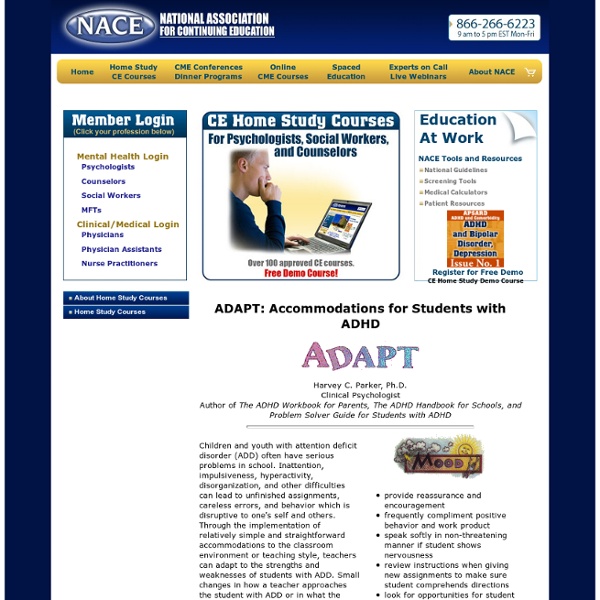



Study Skills Once you have established a schedule to study you need to get the most out of that time. Several things will help increase your effectiveness. As already mentioned, maintaining a regular schedule is one. Another is creating a comfortable environment for studying that is free of distractions. A. Generally all the material that you should know for an exam is presented in lecture or in your lab work. DO NOT take this to imply that you do not need to read the text. Note: Different instructors utilize textbook information to different degrees. If it is discussed in lecture it is important. There is no single "best" way to study. The following is a compilation of many of the techniques used by successful students to study. 1. read and highlight important sections of the reading (note: highlighting is like note taking, highlight only enough to remind yourself of the key information presented. if time is short - preview the material briefly to identify key terms and concepts. 2. 3. 4. 5. 6.
Learning Disabilities in Children: Symptoms, Types, and Testing What are learning disabilities? Learning disabilities, or learning disorders, are an umbrella term for a wide variety of learning problems. A learning disability is not a problem with intelligence or motivation. Simply put, children and adults with learning disabilities see, hear, and understand things differently. Children with learning disabilities can, and do, succeed It can be tough to face the possibility that your child has a learning disorder. But the important thing to remember is that most kids with learning disabilities are just as smart as everyone else. Signs and symptoms of learning disabilities and disorders If you're worried, don't wait If you suspect that your child's learning difficulties may require special assistance, please do not delay in finding support. Learning disabilities look very different from one child to another. It’s not always easy to identify learning disabilities. The following checklist lists some common red flags for learning disorders. Related Articles
ADE Special Education | Home Tagxedo - Word Cloud with Styles New ‘Dyslexie’ font helps dyslexics read better AFP/ Those in a study of the font say it improves reading accuracy. A graphic designer from the Netherlands, Christian Boer, has developed a new font to aid his dyslexia. The font, called Dyslexie, isn’t the first of its kind, but according to Scientific American in an article published Wednesday, “it has received much fanfare from sufferers.” Boer first designing his font in 2008 while studying at the University of Twente in the Netherlands, and in 2010 a fellow student conducted an independent study on the font as part of a master s thesis project. Participants in the study said the font improved their reading accuracy and allowed them to read for longer periods of time before tiring. According to Scientific American, the font tweaks letters of the alphabet that are commonly misread, such as d and m, to make them easier to recognize. Some other fonts designed to aid dyslexic readers are Read Regular, Lexia Readable, Tiresias and Sassoon.
Apps in Education Some Types of Learning Disabilities Some Types of Learning Disabilities — The First Step is Understanding Some types of learning disabilities can be "treated" through proper testing and training. The key is to identify the specific cognitive weaknesses causing the "disorder" and strengthen those cognitive skills through dynamic, one-on-one training and practice. For the parent, the first step is to understand the types of learning disabilities that may be affecting your child. Some Types of Learning Disabilities — General Processing Issues Some types of learning disabilities are categorized by the cognitive processing problem. This means your child may have issues with one of the following: Attention — The ability to stay on task in a sustained, selective, or divided way. Working Memory — The ability to retain and process information for short time periods. Processing Speed — The rate at which the brain handles information. Long-Term Memory — The ability to both store and recall information for later use.
Special Education Web Site – Parents With Children in Special Education NAPCSE Misunderstood Minds . Resources The following resources offer material you can use to become more informed about learning disabilities and differences. They encompass a broad range of viewpoints and approaches to the issues. The list is compiled from books, Web sites, articles, and videos that we consulted during the production of this Web site, or that our advisors recommended. General Books Bernstein, Jane Holmes, and Deborah P. Bos, Candace S., and Sharon Vaughn. Levine, Melvin D. ---. ---. Levine, Melvin D., and Martha Reed. Meltzer, Lynn J., ed. Meltzer, Lynn J., et al. Meltzer, Lynn J., et al. Meltzer, Lynn, and Marjorie Montague. Vail, Priscilla L. Web Sites All Kinds of Minds American Academy of Child and Adolescent Psyc American Academy of Neu American Academy of Pedi American Occupational Therapy Assoc American Psychological Assoc "Dr.
tweenteacher.com 30 Ideas for Teaching Children with Attention-Deficit/Hyperactivity Disorder by Leah Davies, M.Ed. By Leah Davies, M.Ed. The following list may assist teachers who work with ADHD students. For an overview of this disorder see, "Attention-Deficit/Hyperactivity Disorder in Children." 1. 2. 3. 4. 5. 6. 7. 8. 9. 10. 11. 12. 13. 14. 15. 16. 17. 18. 19. 20. 21. 22. 23. 24. 25. 26. 27. 28. 29. 30. inShare Math, English programs, games, worksheets for grades K-8 - Dositey.com educational site Enjoy a wide range of lessons, practice exercises, step-by-step tutorials, and printable worksheets... Try today: Grades K-2: Phonics, Adding Same Numbers, Beginning Fractions Grades 3-4: Thousands, Order of Operations Grades 5-8: Reading, Naming, and Writing Decimals